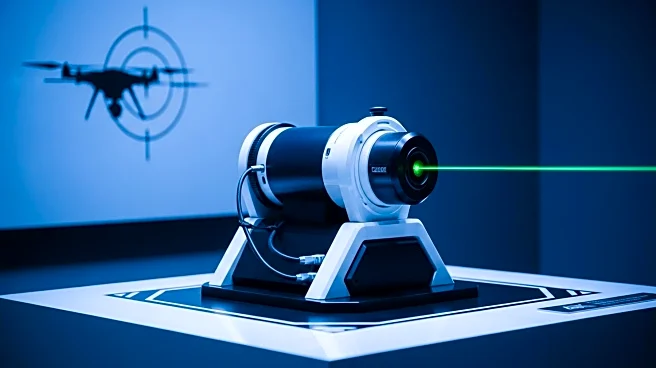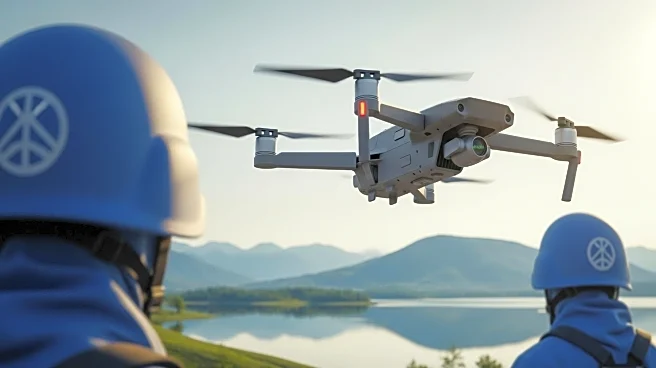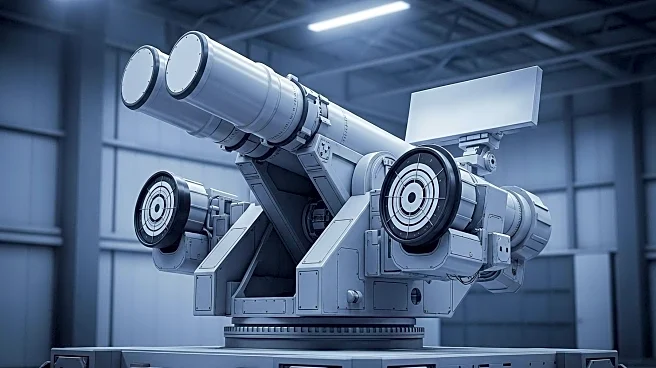What's Happening?
France has announced the order of a counter-drone laser system demonstrator, known as the Syderal system, with plans to potentially field the system by 2030. The French defense armaments agency, DGA, revealed that the system will feature a laser with tens of kilowatts of power. The development is being undertaken by MBDA, Safran, Thales, and Cilas, with Safran and MBDA as shareholders. Cilas previously deployed its Helma-P counter-drone laser system to safeguard the Paris 2024 Olympics. This initiative is part of a broader global trend towards laser weapons, aimed at countering drones more cost-effectively than traditional missile systems. The Syderal demonstrator is designed to counter drones, rockets, mortar shells, and remotely operated munitions, with plans to scale up its power to address missile threats.
Why It's Important?
The development of the Syderal laser weapon system marks a significant advancement in military technology, particularly in the realm of counter-drone capabilities. As drones become increasingly prevalent in military operations, the need for effective countermeasures is critical. Laser systems offer a cost-effective solution compared to missile-based defenses, potentially reducing operational costs for military forces. The U.S. and Israel have already deployed similar systems, indicating a growing reliance on laser technology for defense purposes. This move by France could influence other nations to invest in similar technologies, potentially reshaping defense strategies globally. The ability to counter a range of threats, including drones and missiles, enhances national security and defense readiness.
What's Next?
The Syderal system is expected to undergo further development and testing before its potential deployment around 2030. As the system progresses, it may attract interest from other countries seeking to bolster their defense capabilities against aerial threats. The collaboration between major defense companies like MBDA, Safran, and Thales suggests a strong commitment to advancing laser technology. Future developments may include scaling up the system's power to effectively counter missile threats, which could lead to new contracts and partnerships within the defense industry. Additionally, the success of the Syderal system could pave the way for more widespread adoption of laser weapons in military operations.
Beyond the Headlines
The deployment of laser weapon systems raises ethical and legal considerations, particularly regarding their use in combat scenarios. As these technologies become more advanced, questions about their impact on warfare and international law may arise. The ability to precisely target and neutralize threats with minimal collateral damage could change the dynamics of military engagements. Furthermore, the integration of laser systems into national defense strategies may influence geopolitical relations, as countries seek to maintain technological superiority. The long-term implications of laser weaponry on global security and military tactics remain to be seen.













